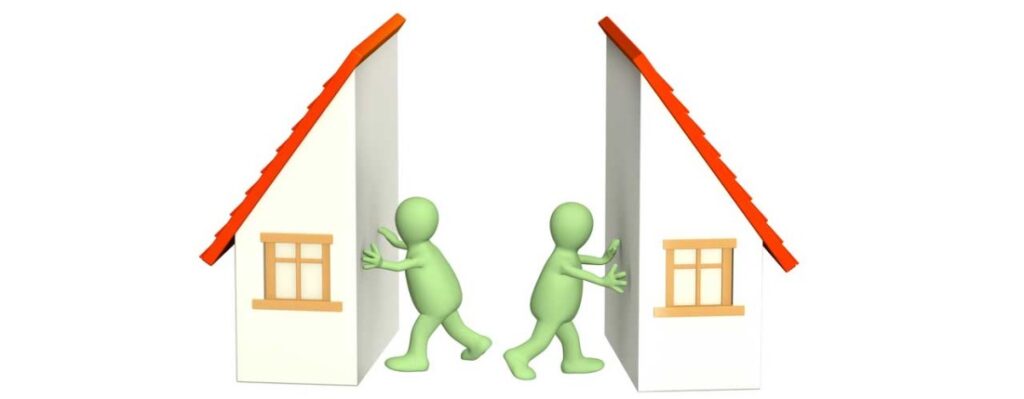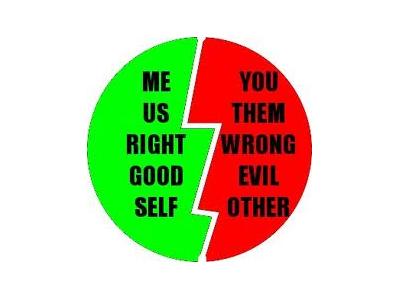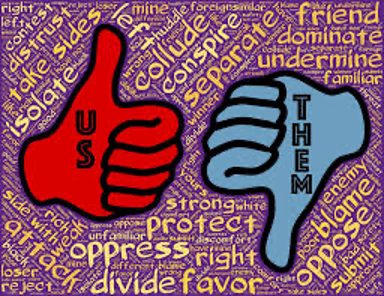(2023-9)

I recently saw a television commercial that caught my attention instantly. It started off with a voice and a simple message on the screen – “THIS COUNTRY HAS NEVER BEEN SO DIVIDED.” My mental reaction was to expect a political commercial, so I stopped what I was doing to pay attention. It turned out to be a commercial for a licorice candy company (licorice.com). After the attention-grabber, it asked a question – are you a licorice lover or hater? Check out the commercial on YouTube (https://www.youtube.com/watch?v=sYnvfNgFEsg).
This commercial resonated with me because it was aligned with a theory I have that over the past few years there has been more division in society. It doesn’t seem to be getting better. Instead, I think it seems to be getting worse. I am concerned about the societal impacts and the mental toll this seems to be taking on people. What challenges does this give a leader? What impact is it having on life?
In the U.S., division seems to spike around presidential elections. I first noticed this in the run-up to the 2008 election. The country seemed to be polarized between the Obama/Biden and McCain/Palin ticket. A staggering amount of vitriol rose. This seemed to die down until the run-up to the 2012 election. Folks on both sides (red vs. blue, Republican vs. Democrat, etc.) argued with each other over the success of the first Obama/Biden term. At work, there were two individuals who sat next to each other in an open office. These two were opposites politically. Their team leader knew this and would periodically insert a comment that would fire up a heated debate between the two. I’m embarrassed to admit that that team leader was me. I’m glad that these two individuals rose above their differences and respected each other as colleagues.
It really grew during the 2016 election cycle. There seemed to be more vitriol between the Clinton and Trum camps. On the U.S. Election Day in 2016, I was on a business trip to Panama. The U.S. election was a hot topic there with locals and Europeans. It had also been a hot topic in Brazil, where I’d been many times that year. I was struck by how many people outside the U.S. had their eye on our election and by how polarizing the discussion got. Even the day after, there were many people who were either overjoyed or deeply depressed.
I have noticed that this state of division or polarization has expanded beyond politics. Religion is always a hotbed of division. I see this becoming more intense lately. Think back to the start of the COVID-19 pandemic. There was disagreement over social distancing, masking, vaccines, etc. In the U.S., there have been numerous demonstrations and riots over race, police violence, abortion rights and many others.
In New Orleans, there have been three local topics that are very polarizing. First, a few statues depicting Civil War officers were removed by the city government. Second, there was a campaign to rename streets to remove any reference to Civil War personalities. Third and most intense issue was the recent recall petition to remove the current mayor (Latoya Cantrell – see https://mrhensonllc.com/leadership-lessons-from-latoya/ for more detail).

I tested my theory and observation that this division and polarization has gotten worse. I found quite a few published articles that validate that polarization seems to be an issue, at least in the U.S.A. The opening paragraph of a 2020 Scientific American article entitled “Why Hatred and ‘Othering’ of Political Foes Has Spiked to Extreme Levels” really caught my attention. It stated “In 1950 the American Political Science Association issued a report expressing concern that Americans exhibited an insufficient degree of political polarization. What a difference a new millennium makes. As we approach 2020’s Election Day, the U.S. political landscape has become a Grand Canyon separating blue and red Americans.” I feel it’s only gotten worse since this article was published. This article also stated that 1861 (leading up to the Civil War) exhibited probably the worst example of hatred and violence in the U.S.
I found other internet articles that talked about the rising level of division and polarization from sources such as Time magazine, Forbes, Psychology Today, Intelligent Management, and Beyond Philosophy. If you are interested in any of these sources, please reach out to me via email at [email protected] and I can share links to the articles.
It can be tough for a leader to navigate through such division and controversy. I have been in situations in the past where teams have been rather polarized. I tried to neutralize the intensity of discussion and disagreement while respecting both sides of the topic. Sometimes, the topic is clearly dogmatic and one side “wins” and should, due to policy, ethics, or morality. Most often, that’s not the case.
Dissension, disagreement, and polarization can bring a great deal of turmoil to a team. The website Beyond Philosophy posted an article entitled “10 Things to Do When Leading in Turmoil” which did a good job giving suggestions to leaders in times of turmoil. The article can be found online at https://beyondphilosophy.com/10-things-to-do-when-leading-in-turmoil/ and the ten things are:
- Be seen and seen often.
- Embrace honesty.
- Set out the plan.
- Roll up your sleeves.
- Situate yourself on the front lines.
- Communicate regularly.
- Encourage, don’t discourage.
- Put your feelings to one side.
- Stick to your principles.
- Find your patience.
While the article addresses change in general, I found them excellent reminders for a leader to keep in mind when confronted with polarization. I have seen people use the “us versus them” mentality to promote and provoke dissension and disagreement. The leader should not let this mindset poison the team. Visible, authentic leadership is needed during times of turmoil.

In times of polarization, the leader should be the one to pull the team together. I didn’t do this during the 2012 election and now realize my actions were wrong. What do you think? Have you seen a leader deal well with polarizing situations? If so, how did they handle it? Are you facing a situation that needs harmony instead of discord? Send me an email or comment on this post if you’d like to discuss it further.